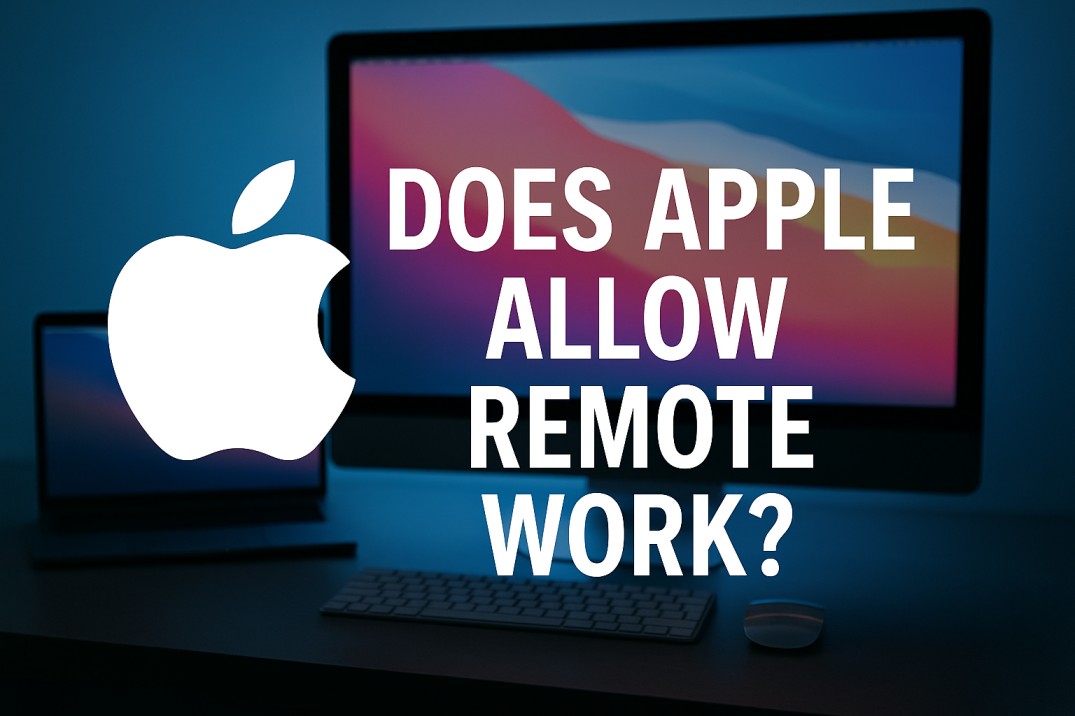Since the pandemic began, remote work has become a permanent part of how many companies operate—but Apple has taken a notably cautious stance. If you’re wondering, “Does Apple allow remote work?”, the short answer is: yes—but with restrictions.
Let’s break it down.
Apple’s Official Remote Work Policy
Apple has adopted a hybrid model rather than full-time remote work. Most employees are expected to work in the office three days per week—typically Tuesday through Thursday—with the flexibility to work remotely on Mondays and Fridays.
This policy applies to most corporate employees, especially in roles tied to product development, engineering, and hardware. Apple believes that in-person collaboration drives creativity and innovation, which is why it maintains a strong preference for office-based work.
Can You Work Fully Remote at Apple?
In rare cases, yes—Apple has approved full-time remote work arrangements, but it’s not common. Employees must formally apply for remote status, and decisions are made on a case-by-case basis.
Reasons Apple might approve full-time remote work include:
- A role that’s independent and doesn’t require constant collaboration.
- Exceptional performance or long tenure.
- Special circumstances like health needs or relocation.
Still, even for approved employees, full remote setups may come with conditions like attending periodic in-person meetings or team offsites.
Employee Reactions to Apple’s Policy
Apple’s push back to in-office work has sparked pushback. In 2022 and 2023, some employees expressed frustration over the rigid return-to-office (RTO) policy, especially since other major tech firms were expanding remote options.
An internal group called “Apple Together” even published open letters criticizing the policy, arguing that forced in-office work reduces work-life balance and hinders diversity and inclusion.
Despite this, Apple has largely stayed the course, with executive leadership—including Tim Cook—continuing to emphasize the value of in-person collaboration.
How Apple Compares to Other Tech Giants
- Google: Hybrid model (3 days in office), but more flexible with location changes and full-remote approvals.
- Meta (Facebook): More supportive of remote-first roles and allows many employees to apply for fully remote status.
- Microsoft: Offers a “manager-approved flexibility” model, with more openness to hybrid and fully remote arrangements.
Compared to these peers, Apple is among the most office-centric of the major tech companies.
Remote Job Opportunities at Apple
When searching Apple’s job board, very few listings are marked as “remote.” Most still specify a physical location and require presence at a particular campus (Cupertino, Austin, etc.).
However, there are some exceptions:
- Customer support roles
- Content review positions
- Certain software jobs
If you’re targeting remote work at Apple, be sure to:
- Look for the “Remote” tag in job listings.
- Filter by location → Remote.
- Ask during interviews if there’s any flexibility.
📊 1. Nearly 90% of Apple employees prefer indefinite work-from-home options
An internal survey showed that almost 90% of Apple staff “strongly agree” that having location-flexible work options is “very important”
📊 2. 45% of full-time U.S. employees worked from home during the pandemic
A Gallup poll from September 2021 found that 45% of full-time U.S. workers were working remotely—25% “always” and 20% “part-time”—with 91% of remote-capable employees wanting to continue en.wikipedia.org.
Final Answer: Does Apple Allow Remote Work?
Yes, but mostly part-time. Apple’s model is hybrid by default, with most employees expected in the office three days a week. Full-time remote work is possible, but rare—and must be formally requested and approved.
If you’re looking for maximum flexibility or a digital nomad lifestyle, Apple may not be the ideal fit. But if you’re open to hybrid work and want to be part of a company that prioritizes on-site collaboration, Apple might still offer the best of both worlds.

Andrej Fedek is the creator and the one-person owner of two blogs: InterCool Studio and CareersMomentum. As an experienced marketer, he is driven by turning leads into customers with White Hat SEO techniques. Besides being a boss, he is a real team player with a great sense of equality.
